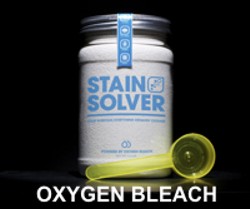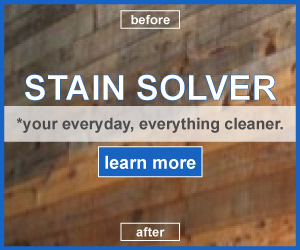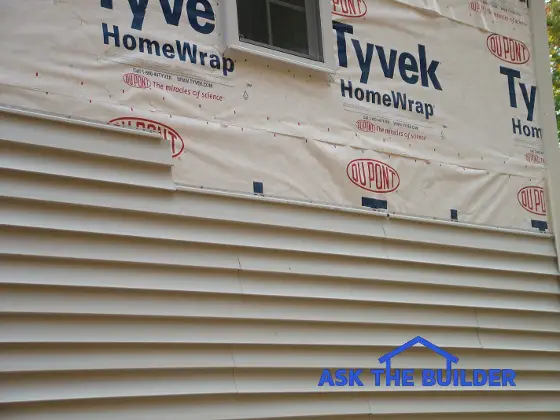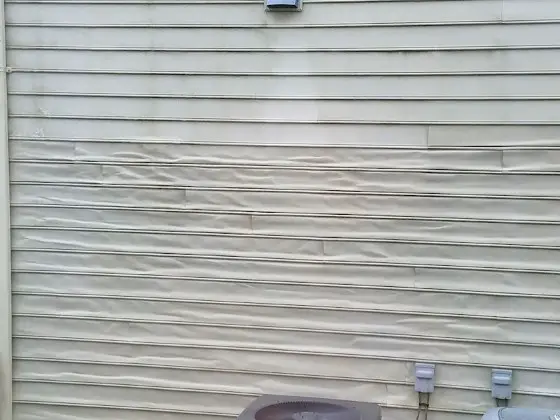! ! ! See Author's Notes at Bottom of Column ! ! !
Start the presses! The raw data from the latest Earlham University study about wood sealer performance has just been received! The final report will take a few weeks to be generated but the visual findings tell the tale. The actual findings were just released to me several months ago on May 2, 2001.
Why are these test results so important? It just so happens that outdoor wood cleaning and sealing is one of the most important topics I have ever covered. I have discovered that homeowners like you are disgusted with the poor performance of the heavily advertised brands you see on TV and those that clutter the shelves of many of the big box home centers that dot the fruited plain.
It takes a lot of work to clean a deck or wood siding and then seal it. It is no wonder that you get upset when the deck or siding turns black, gray or green after six to nine months! Imagine a wood sealer that lasts two to three years! It is possible to get results like that if you choose wisely.
Cleaning First
Before you apply any wood sealer - preferably a penetrating water repellent - the wood needs to be clean. This is a common sense issue. Each and every spring I am amazed at how much disinformation there is out there about this process. Each spring I see magazine and newspaper articles promoting the use of chlorine bleach-based products.
Chlorine bleach is a wonderful sanitizer. If you want to kill germs, use it. If you want to kill the trees and plants around your house, use it. If you want to take the color out of your deck lumber, use it. If you want to accelerate the corrosion of the nails, screws and structural hardware that holds your deck together, use it.
If you want to avoid all of the above problems, use Oxygen bleach to clean your deck! See below for details about oxygen bleach.
The Cleaning Process
I wish I could share with you all the handwritten letters and emails I have received about decks that have been ruined by power washing. This method of cleaning decks is simply a huge mistake in my opinion. It doesn't take a rocket scientist to figure out that wood is soft and can be easily eroded with a high pressure stream. I get calls from professional cleaners all the time telling me I am wrong. They say if you hold the wand just right there is no damage. They are wrong. There is damage, it just may not be visible unless you look closely. What's more, the damage is cumulative. Wash your deck with a power washer year after year and I guarantee that you will see erosion of the light colored areas of the lumber.
I have written a step-by-step deck cleaning tutorial . The photos at this section are not enhanced! Wait till you see the before and after shots. I did the entire thing with oxygen bleach and it is so easy to use. We were working above a valuable rose garden and the rose bushes were not harmed in the least by the oxygen bleach cleaner.
Really Easy
 I get reviews every week from people who have used my Stain Solver Oxygen bleach. I started selling oxygen bleach many years ago, when I saw how well it performed. Within the past two weeks, I received test data that shows that my oxygen bleach product works even better than pure oxygen bleach. I know it sounds crazy, but it is true. Mark U. is a satisfied user and told me this:
I get reviews every week from people who have used my Stain Solver Oxygen bleach. I started selling oxygen bleach many years ago, when I saw how well it performed. Within the past two weeks, I received test data that shows that my oxygen bleach product works even better than pure oxygen bleach. I know it sounds crazy, but it is true. Mark U. is a satisfied user and told me this:
"Tim, your Stain Solver exceeded our expectations! The deck looks superb! The product was easier to work with than you said it would be."
It is indeed easy. You simply pour the oxygen bleach powder into some warm water, let is dissolve, apply it, let it sit, lightly scrub and rinse!
The trick to cleaning decks with oxygen bleach is to work in the cooler part of the day and to keep the surface of the wood wet with the solution for 15 to 20 minutes. It will foam and bubble and the oxygen is working, not you. Lightly scrub to remove loose and UV damaged wood fibers and rinse with a garden hose. It is that simple! I URGE you to go to my website to view the tutorial!
Author's Notes:
Read Sheryl's comments about using a pressure washer on her deck.
Tim,
"I am going to order some of your Oxygen bleach to clean my wooden deck that is on "the list" this summer. I sure wish I had known about this product before I power washed it two years ago - as I wondered why the wood looked messed up afterwards."
- Sheryl W., State Park, SC
| Message from Tim:
Years ago while researching a column about cleaning decks, I discovered the wonders of Oxygen Bleach. It is perhaps the 'greenest' cleaner I know of as it uses oxygen ions to break apart stains, dirt and odor molecules. There are no harsh chemicals, and it works on just about anything that is water washable. I decided to create my own special blend using ingredients made in the USA. In fact, the raw materials in the active ingredient are food-grade quality registered with the FDA. I call my product Stain Solver. I urge you to use it to help with cleaning your deck or wood. You will be amazed at the results! |
Column B378




